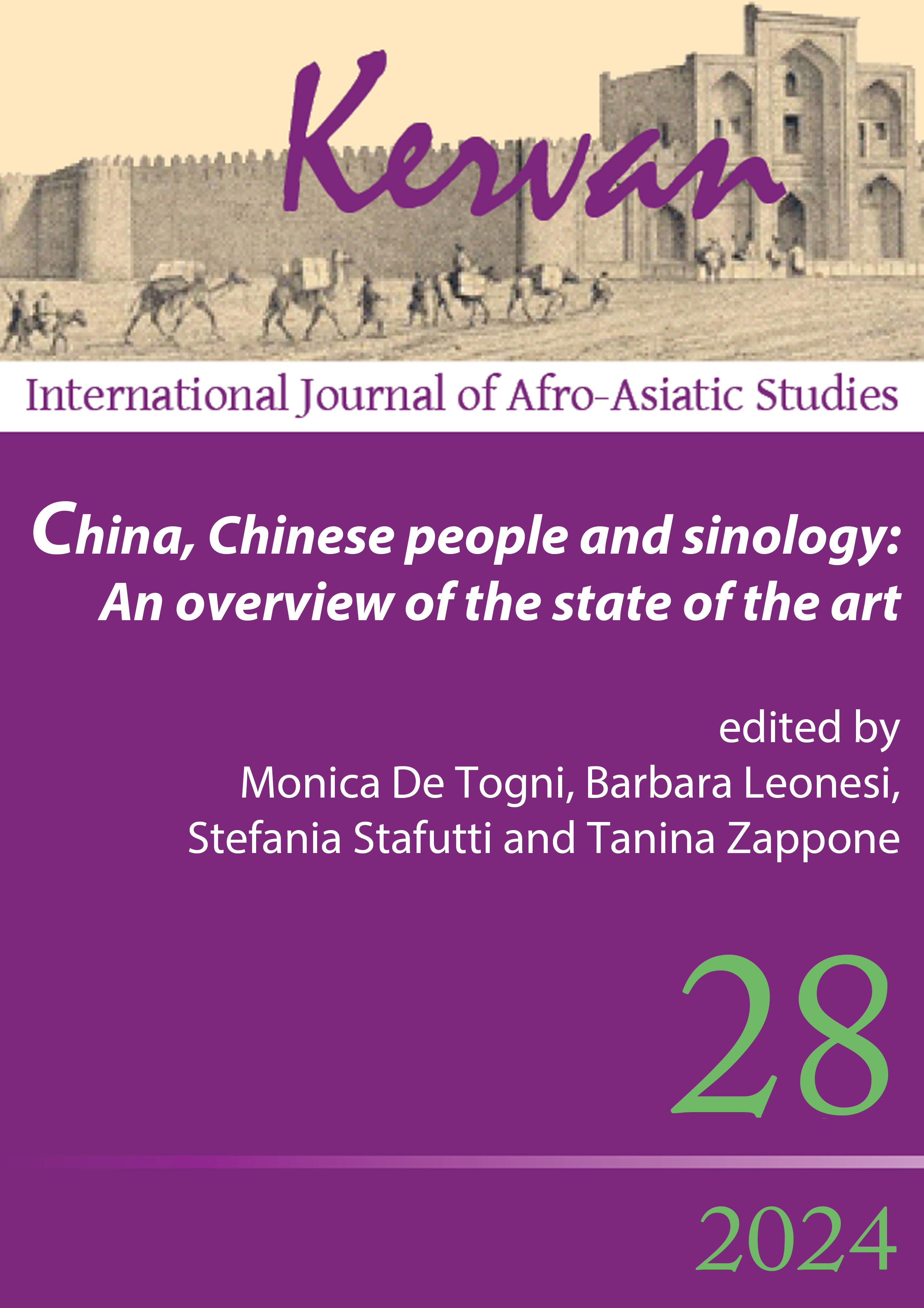Graffiti in Shanghai and Chengdu: Looking for Chinese writing, symbols and calligraphy along the streets
DOI:
https://doi.org/10.13135/1825-263X/11610Abstract
After a brief introduction to the origins and development of graffiti in China, this paper first examines the graffiti scene in Shanghai through two prominent figures. On one hand, the analysis focuses on 1. the OOPS crew—Shanghai’s most renowned and influential graffiti crew, composed of both Chinese and Western members. The crew merges the Western graffiti art movement with Chinese artistic and cultural traditions, incorporating Chinese characters, calligraphy, and ancient symbols into their work. On the other hand, within this same international context, the paper considers; 2. Dezio, a French graffiti writer highly regarded in Shanghai, who integrates Chinese characters and employs a Chinese tag in his creations. These two actors exemplify the cultural cosmopolitanism and intercultural dynamics that make Shanghai fertile ground for creative expressions born from cross-cultural ‘contamination.’ To further explore the diffusion of graffiti art in China, this paper also investigates the graffiti scene in Chengdu. The analysis focuses on two case studies: 1. GAS, one of Chengdu’s most prominent graffiti writers, who expresses his identity and artistic intent through his Chinese tag (qi 氣). His works are centered on Chinese script, frequently utilizing traditional characters and drawing inspiration from Chinese calligraphy to create a distinctive, locally oriented graffiti style; 2. Fan Sack, who began his career as a graffiti writer in Chengdu and now resides and works in Paris. Transitioning from graffiti writing to figurative paintings inspired by Buddhist themes, Fan Sack has developed a more representational artistic language, spreading his work throughout Europe.
Downloads
Downloads
Published
Issue
Section
License
Gli autori che pubblicano su Kervan accettano le seguenti condizioni:
- Gli autori mantengono i diritti sulla loro opera e cedono alla rivista il diritto di prima pubblicazione dell'opera, contemporaneamente licenziata sotto una Licenza Creative Commons - Attribuzione che permette ad altri di condividere l'opera indicando la paternità intellettuale e la prima pubblicazione su questa rivista.
- Gli autori possono aderire ad altri accordi di licenza non esclusiva per la distribuzione della versione dell'opera pubblicata (es. depositarla in un archivio istituzionale o pubblicarla in una monografia), a patto di indicare che la prima pubblicazione è avvenuta su questa rivista.


 The articles that have appeared on Kervan since 2016 are rated as Class A in the system of National Scientific Qualification (ASN, disciplines 10/N1 and 10/N3).
The articles that have appeared on Kervan since 2016 are rated as Class A in the system of National Scientific Qualification (ASN, disciplines 10/N1 and 10/N3). The journal has been approved for inclusion in DOAJ. The DOAJ listing of the journal is available at
The journal has been approved for inclusion in DOAJ. The DOAJ listing of the journal is available at  The journal has been approved for inclusion in ERIH PLUS. The ERIH PLUS listing of the journal is available at
The journal has been approved for inclusion in ERIH PLUS. The ERIH PLUS listing of the journal is available at  Kervan was just accepted for indexing in SCOPUS. This important milestone ensures that articles published in Kervan are easily found when searching for library, archives and Information science and it enables Kervan authors to keep track of how often their article has been cited by others.
Kervan was just accepted for indexing in SCOPUS. This important milestone ensures that articles published in Kervan are easily found when searching for library, archives and Information science and it enables Kervan authors to keep track of how often their article has been cited by others.
